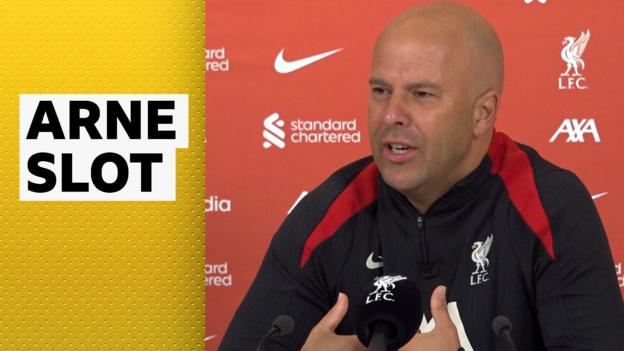
The Unseen Architects of Success: Clubs with the Best Scouting Systems in Modern Football
In the high-stakes world of professional football, where transfer fees skyrocket and competition for top talent intensifies, the ability to identify, acquire, and develop players before they reach their peak value is an art form. While multi-million dollar transfers often grab headlines, the true bedrock of sustained success for many clubs lies in their unsung heroes: the scouting departments. These intricate networks of analysts, data scientists, and on-the-ground scouts work tirelessly to unearth the next global superstar, the tactical missing piece, or the hidden gem that can transform a club’s fortunes both on and off the pitch.
A truly elite scouting system is far more than just finding promising teenagers. It encompasses a holistic approach that integrates deep tactical understanding, financial acumen, a global reach, and a profound connection to the club’s philosophy and youth development strategy. It’s about seeing potential where others see raw talent, understanding player profiles that fit the team’s specific needs, and often, having the courage to invest in unconventional markets.
This article delves into some of the clubs widely recognized for possessing the most effective and innovative scouting systems, exploring the unique methodologies and philosophies that have allowed them to consistently outperform their financial peers and build sustainable models for success.
1. Borussia Dortmund: The Bundesliga’s Talent Magnet
Borussia Dortmund has cemented its reputation as the ultimate proving ground for young, exciting talent. Their scouting system is meticulously designed to identify high-potential players, primarily from leagues across Europe, who possess exceptional technical ability, speed, and a fearless attitude. Dortmund’s strategy isn’t just about finding talent; it’s about providing a clear pathway to first-team football, an enticing prospect for ambitious youngsters who might be stuck in the academies of bigger, more established clubs.
Key Elements of Dortmund’s System:
- Global Reach with European Focus: While they cast a wide net, their most successful acquisitions often come from within Europe – particularly France, England, and Germany itself. They have a strong understanding of the youth development structures in these countries.
- Emphasis on Specific Profiles: Dortmund scouts look for players who fit their high-intensity, attacking brand of football. This often means quick, technically gifted wingers, dynamic central midfielders, and prolific strikers. They prioritize potential over immediate polish.
- Data-Driven, but Human-Centric: While analytics play a role in initial screening, Dortmund places immense value on in-person scouting, psychological profiling, and understanding a player’s character and adaptability.
- Clear Development Pathway: Players know that if they perform, they will get game time. This promise is a powerful recruitment tool, attracting talents like Jadon Sancho, Erling Haaland, Jude Bellingham, Ousmane Dembélé, and Christian Pulisic, all of whom blossomed at the Signal Iduna Park before moving on for significant profits.
- Financial Acumen: Dortmund’s model is inherently sustainable. They invest in young players, develop them, and if an irresistible offer comes, they sell for a substantial profit, reinvesting those funds back into the scouting and development cycle. This virtuous cycle has allowed them to compete with financially superior clubs.
2. AFC Ajax: The Enduring Dutch Masterclass
Ajax’s scouting and academy system, "De Toekomst" (The Future), is legendary. For decades, the Amsterdam club has been a beacon of youth development and astute player recruitment, not just for its own needs but for the entire European football landscape. Their philosophy is deeply rooted in Total Football principles, focusing on technical excellence, tactical versatility, and intelligent decision-making.
Key Elements of Ajax’s System:
- World-Renowned Academy: The core of Ajax’s success lies in its own academy, which consistently produces world-class talent. Scouting starts within their own ranks from a very young age.
- Specific Player Profile: Scouts look for players who can thrive in Ajax’s possession-based, attacking style. This means prioritizing technical skill, vision, footballing intelligence, and adaptability across multiple positions.
- Global Network, Strategic Focus: While their academy is paramount, Ajax has also built an extensive global scouting network, particularly strong in South America and Eastern Europe. They often target players who might be overlooked by bigger clubs due to size or lack of immediate physical prowess, trusting their ability to develop them. Examples include Luis Suárez, Nicolás Tagliafico, and Antony.
- Patience and Integration: New signings, especially younger ones, are often given time to adapt, sometimes starting in Jong Ajax (the reserve team) to fully immerse themselves in the club’s tactical philosophy before making the step up to the senior team.
- Consistent Profit Generation: Like Dortmund, Ajax operates as a "selling club" at the highest level. The sales of players like Matthijs de Ligt, Frenkie de Jong, Donny van de Beek, and Lisandro Martínez have generated hundreds of millions, ensuring the club’s financial stability and ability to continue investing in its core model.
3. SL Benfica & FC Porto: Portugal’s Production Lines
The two giants of Portuguese football, Benfica and Porto, have perfected the art of identifying, acquiring, and developing South American talent, particularly from Brazil and Argentina, for relatively low fees before selling them on for astronomical profits. Their scouting networks in these regions are arguably the most effective in the world.
Key Elements of Their Systems:
- Deep South American Roots: Both clubs have extensive, decades-old networks of scouts, agents, and contacts throughout Brazil, Argentina, Uruguay, and other South American nations. They understand the culture, the leagues, and the specific nuances of talent identification in these regions.
- Early Identification: They often identify players at a very young age, sometimes even before they have broken into their respective senior teams, allowing them to sign them for significantly lower fees.
- Development Pathway: Players are brought to Portugal, given opportunities in the first team or B teams, and integrated into European football. The Portuguese league provides a competitive but not overwhelming environment for adaptation.
- Financial Model: This is where their systems truly shine. Benfica’s sales of João Félix, Enzo Fernández, Rúben Dias, and Ederson, or Porto’s sales of Éder Militão, James Rodríguez, Falcao, and Pepe, exemplify their incredible return on investment. This model is crucial for their financial health and ability to compete in European competitions.
- Adaptability: They are adept at finding players who can quickly adapt to European football and the demands of top-tier competition, often identifying specific traits like resilience, tactical intelligence, and a strong work ethic alongside raw talent.
4. RB Leipzig & RB Salzburg: The Red Bull Network
The Red Bull football group, encompassing clubs like RB Leipzig and RB Salzburg, represents a relatively new but incredibly effective model built on data, shared resources, and a specific player profile. Their system is highly integrated, allowing for seamless player movement and development within the network.
Key Elements of the Red Bull System:
- Integrated Multi-Club Network: Players often move between Salzburg and Leipzig (and other Red Bull clubs), gaining experience and developing within a consistent tactical philosophy. This internal transfer system reduces risk and ensures players are already familiar with the Red Bull way.
- Heavy Data Analytics: Red Bull’s scouting is heavily reliant on advanced data metrics to identify players who fit their high-pressing, high-intensity tactical style. They look for specific athletic attributes, work rates, and statistical performance indicators.
- Focus on Young, Athletic Talent: The primary target is young players (typically under 23) with high physical potential, tactical versatility, and the capacity to develop rapidly. They prioritize players who can excel in transitional play and pressing schemes.
- Global Reach with Specific Targets: Their network is global, but their focus is very specific: players who can thrive in their system. They’ve found success in Scandinavia, Eastern Europe, France, and within their own academies. Examples include Dayot Upamecano, Ibrahima Konaté, Christopher Nkunku, Dominik Szoboszlai, and, of course, Erling Haaland (via Salzburg).
- Rapid Development and High Resale: The Red Bull model is designed for rapid player development and subsequent high-value sales, similar to Dortmund and the Portuguese clubs. This constant churn of talent fuels their competitive edge.
5. Brighton & Hove Albion: The Data-Driven Disruptor
In recent years, Brighton has emerged as a fascinating case study in elite scouting, particularly within the Premier League’s highly competitive landscape. They have consistently identified and acquired undervalued talent from unconventional markets, leveraging advanced data analytics and a clear strategic vision.
Key Elements of Brighton’s System:
- Pioneering Data Analytics: Brighton is widely regarded as one of the most data-driven clubs in world football. They use sophisticated models to identify players whose underlying statistics suggest they are performing at a higher level than their current market value indicates, often in less-scouted leagues.
- Global but Niche Market Focus: While they scout globally, they have a particular knack for finding players in leagues that major European clubs might overlook – like Ecuador, Argentina, Japan, and Spain’s lower divisions.
- Clear Player Profile and System Fit: They look for players who fit their possession-based, tactically intelligent style of play. They are less concerned with immediate fame and more with how a player’s attributes align with their strategic vision.
- Patience and Integration: New signings are often given time to settle, sometimes spending time on loan or gradually integrating into the first team. They prioritize long-term development over immediate impact.
- Exceptional Return on Investment: The club has generated significant profits from players like Marc Cucurella, Yves Bissouma, Leandro Trossard, Alexis Mac Allister, and Moisés Caicedo, all of whom were signed for relatively modest fees and sold for many multiples of their acquisition cost. This financial success allows them to punch above their weight in the Premier League.
Conclusion: The Evolving Art of Talent Identification
The clubs highlighted above represent the pinnacle of modern football scouting, each with a distinctive philosophy and operational model. What unites them is a shared understanding that sustained success in football is not solely about outspending rivals, but about outsmarting them.
The best scouting systems are characterized by:
- Global Reach: Extending networks far beyond traditional markets.
- Data Integration: Leveraging analytics to identify patterns and uncover hidden value, complementing human insight.
- Clear Player Profiles: A deep understanding of the club’s tactical identity and the specific attributes needed to fit that system.
- Patience and Development: A commitment to nurturing talent, allowing players to grow and adapt.
- Financial Sustainability: Turning player development into a profitable cycle that fuels further investment.
- Adaptability: Continuously evolving their methods to stay ahead in an ever-changing football landscape.
As football continues to globalize and the competition for talent intensifies, the role of the scout and the sophistication of scouting systems will only grow in importance. These unseen architects of success will remain the crucial differentiator for clubs aiming to build legacies, not just transfer windows. The ability to peer into the future and identify the stars of tomorrow, before they shine brightest, will continue to be the most valuable currency in the beautiful game.



